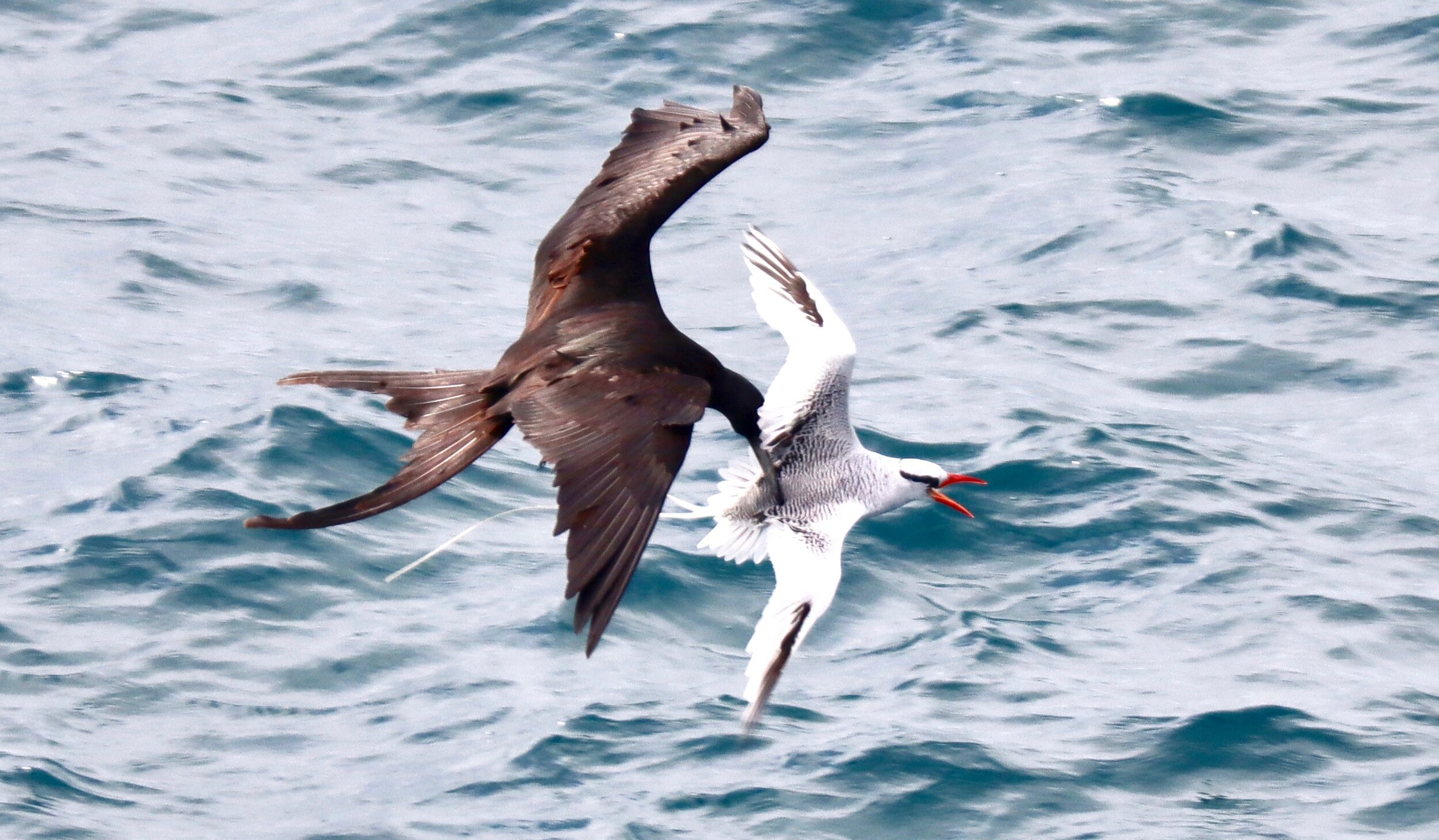Galápagos Birds
I can’t even begin to describe what a feast on the eyes and mind the Galápagos Islands were. I spent 7 days on a catamaran with 14 other tourists and a full crew. Our guide, Paola, was a native to the islands and had an encyclopedic memory of all flora, fauna, geology, culture, etc. There was hardly a question that she did not know the answer to. To give you a taste, I am highlighting here the photography of Athene Blakeman, a brilliant photographer with whom I was lucky to share a boat for a week. These are a taste of the animals we saw, and I will continue to add more of my own pictures and stories to complement her excellent eye. Nearly everything in these photos she and I saw together, so it does not feel disingenuous to show my own experience through her lens.
Blue-footed boobies (Sula nebouxii). Both males and females have blue feet. Their name comes from the Spanish word for clown or fool [bobo] because they lift their feet up dramatically and dance to attract their mates (as shown here). It is a sexually selected trait, so the bluer the feet, the more desirable the male to the female. The blue comes from carotenoids from a healthy diet of fresh fish. Carotenoids are good for the immune system. Thus, the blue feet are a good representation of the bird’s immune health.
One of the 17 finch species found in the Galápagos!
A juvenile magnificent frigatebird (Fregata magnificens). These birds are all over the Galápagos (along with a very similar species, the great frigatebird (Fregata minor)). They soared alongside our boat as we moved from island to island. They are known as kleptoparasites, meaning they occasionally rob food from other birds. Tropicbirds, shown below, are often a victim of this thievery.
The red-billed tropicbird (Phaethon aethereus), shown flying in search of food. See the long tail? The frigatebird can grasp the tail and pull the tropicbird towards it until can hold on to the tropicbird’s body with its beak.
Frigatebird grabbing a tropicbird to make it vomit up its recent catch of food.
There were about 5 frigatebirds chasing this poor tropicbird. The good(ish) news is that this type of food acquirement is relatively less frequent than gaining food by other means, but still, tropicbirds always have to be on the lookout!
Short-eared owl (Asio flammeus galapagoensis). Isn’t this owl incredible? It is somewhat uncommon to be out and about during the day, so we weren’t expecting to see one. And yet, it was one of the very first birds we saw on the first hike of our tour (Isla Plaza Sur). This one was sitting patiently, looking a bit annoyed at us. We noticed a bunch of bird wings nearby and figured it was digesting a nice, big breakfast. It is known to grab petrels (another type of bird) and only eat the bodies, discarding the wings. It is common to find bird wings on the ground, placed perfectly, as though the bird’s body simply disappeared and left the wings behind.
More photos to come soon!
And again, all photography here is by the talented Athene Blakeman.


![Blue-footed boobies (Sula nebouxii). Both males and females have blue feet. Their name comes from the Spanish word for clown or fool [bobo] because they lift their feet up dramatically and dance to attract their mates (as shown here). It is a sexua…](https://images.squarespace-cdn.com/content/v1/5deefba5fbe89c56400f287f/1580672840101-VR4AEMDVLVK9R8Y2ZRUZ/Boobies.jpeg)




